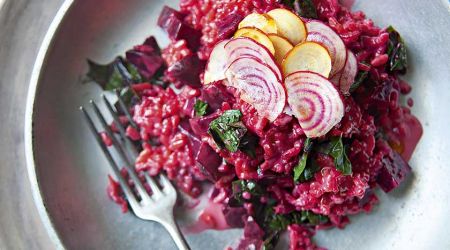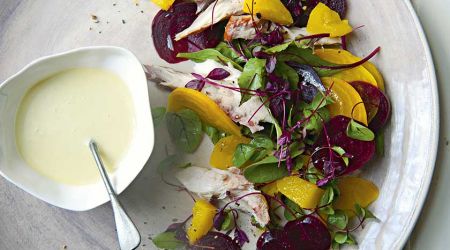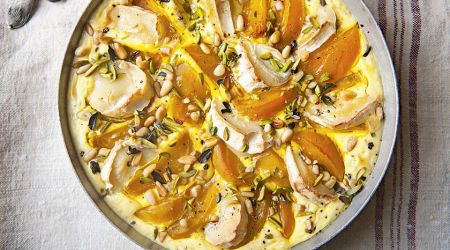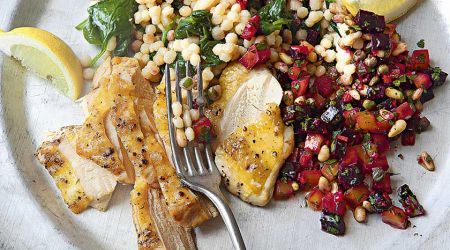Beetroot
Sliced for salads, boiled for borscht or laid atop juicy burgers, this bright and beautiful vegetable packs a purple punch, says Clarissa Hyman with recipes by Linda Tubby
The major drawback to preparing beetroot is that it makes you look like the lovechild of Lady Macbeth and Sweeney Todd: magenta hands, tea towels carrying those livid red spots and suspect splatterings on your clothes. Not to mention the tendency to stain all other ingredients a bubble-gum pink. But is it worth it? I should say so. Beetroot is exceptionally delicious and versatile, and most justified of its renaissance.
Pickled beetroot, too, after years spent out in the culinary wilderness. The sad memories of mouth-puckering malt vinegar have given way to fashionable fermentation, in which the beets are preserved at their tantalising, tangy best like bottled garnets waiting to adorn orange and walnut winter salads.
It is the taste of tiny, homegrown and freshly dug beetroots, however, that is the real revelation. Food writer Sybil Kapoor compares them to small scented sugar lumps and suggests tossing them, once boiled or baked, in butter or the juices of roast lamb. They also pair brilliantly with game and offal. Follow kitchen garden expert Sarah Raven’s method by laying them on an oven tray scattered with rock salt mixed with different herbs and spices and drizzled with olive oil before roasting; or baking in a foil parcel with herbs and olive oil for a wonderful concentrated flavour.
Eastern European and Scandinavian countries have long valued beetroot, commonly (and, to my mind, incomparably) served with sour cream and dill. It is the main ingredient in borsht, and also partners blissfully well with potatoes, apples and herring.
The key tip when it comes to advance preparation is not to trim them, because this will cause bleeding. Instead, leave a short length of stem and root. Once cooked, the skin, root and stem will fall off if you gently coax them. Test if baked or boiled beetroot are tender by rubbing the skin with your thumb to see if it peels easily. You can wear rubber gloves to prevent the staining.
Gardeners can also grow golden-yellow and white beetroot to make eye-catching salads, although the flavour is much the same. The trick is to cook and dress the different colours separately and mix at the last moment. Not only have more hues been introduced to the seed catalogues – such as Burpee’s Golden, Albina Vereduna and Bull’s Blood – but today home-growers can also choose various shapes from round or long to ones with flattened tops.
One of the most spectacular varieties is Chioggia, which boasts pretty pink and white rings when sliced open, and is best consumed raw because the colour fades when cooked.
When buying beetroot, keep an eye out for firm-textured roots with fresh green tops; misshapen roots can indicate bolting and consequently a poor taste and texture. Very young beetroot leaves are edible, but in some varieties these can taste bitter.
Even when sub-prime, beetroot is still a superfood packed with vitamins and minerals such as potassium, nitric acid and iron. Its properties offer a powerful boost to blood and heart, and it is thought to be helpful in fighting cancer. Indeed, beetroot is the gym-goer’s shot of choice for the increased blood low to muscles. Eating them raw gives maximum health benefits, so grate them for salads. Steaming helps preserve more nutrients too.
Although people have been eating the leaves for thousands of years, references to swollen-rooted beetroots date back only to the 13th century. They were a common ingredient in the ubiquitous daily pottage, although they had a long, pale, relatively thin shape and were probably tough, fibrous and poor-tasting. The swollen ‘red root’ or ‘Roman beet’ – the variety we are today most familiar with – became more firmly established in the 16th century, possibly originating in the great fruit and vegetable cultivation centres of Italy (hence the name) and perhaps introduced to this country by Protestant refugees.
In 1597, herbalist John Gerard wrote of its ‘wholesome’ qualities, as well as its versatility, making it suitable for many ‘fair and good’ dishes. By the 19th century, beetroot was well established as a commonplace vegetable, becoming also a humorous symbol of redness. The periodical All the Year Round, founded in 1859 by
Charles Dickens, for instance, describes ‘the smallest boy, with the whitest face, the most beetrooty nose, ever seen’.
Fried beetroot was recommended as a breakfast dish in one Victorian vegetarian recipe book, as were beetroot sandwiches in another. Neither tempts modern tastebuds with their austere seasoning, however red beetroot biscuits were actually quite popular and intriguing; anticipating by a good century the interest in cakes made with carrots and courgettes too.
In the 17th century diarist John Evelyn had noted how cold slices of boiled red beetroot made ‘a grateful winter sallet’ (salad), referring also to the ‘curious figures’ that the French and Italians sculpted for their own versions. Beetroot-carving as a competitive sport? I’m going into training, but pass me the Marigolds first.
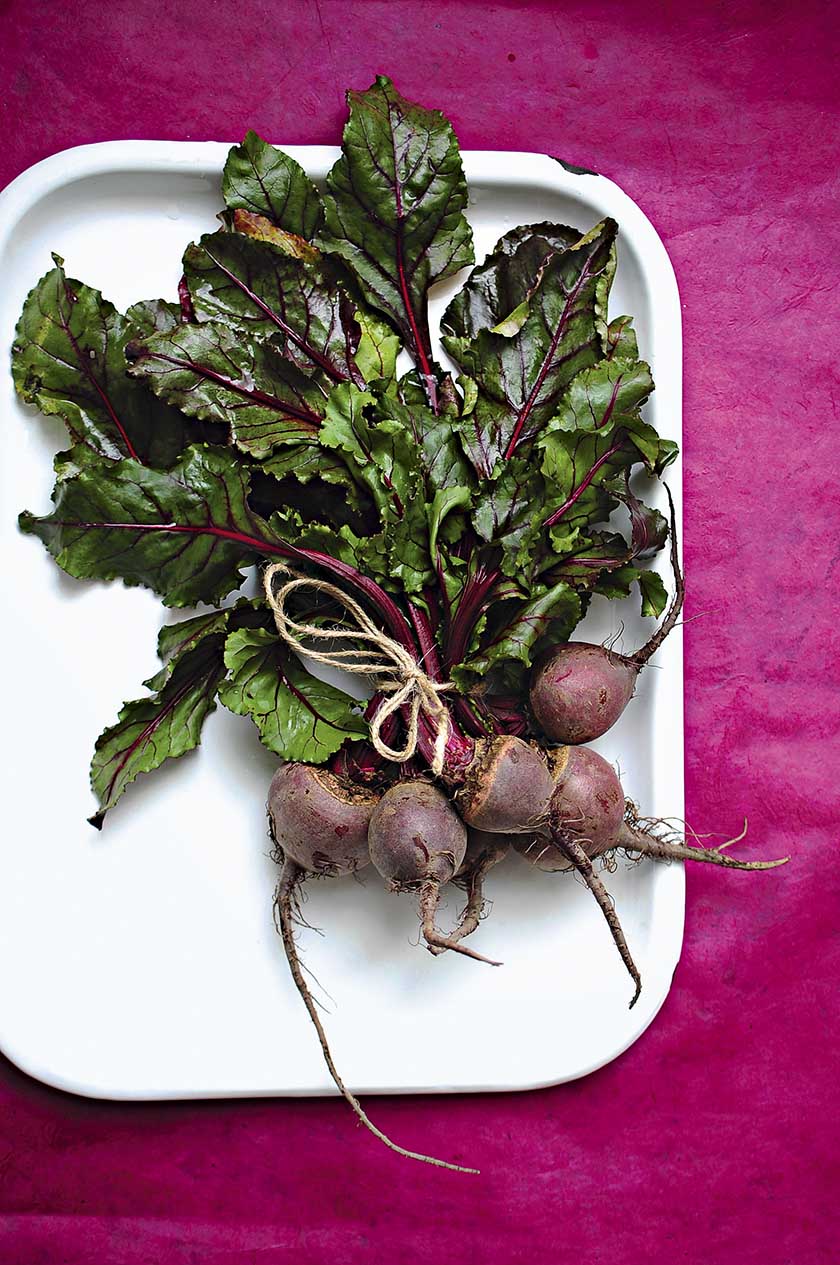
Recipes
Get Premium access to all the latest content online
Subscribe and view full print editions online... Subscribe

